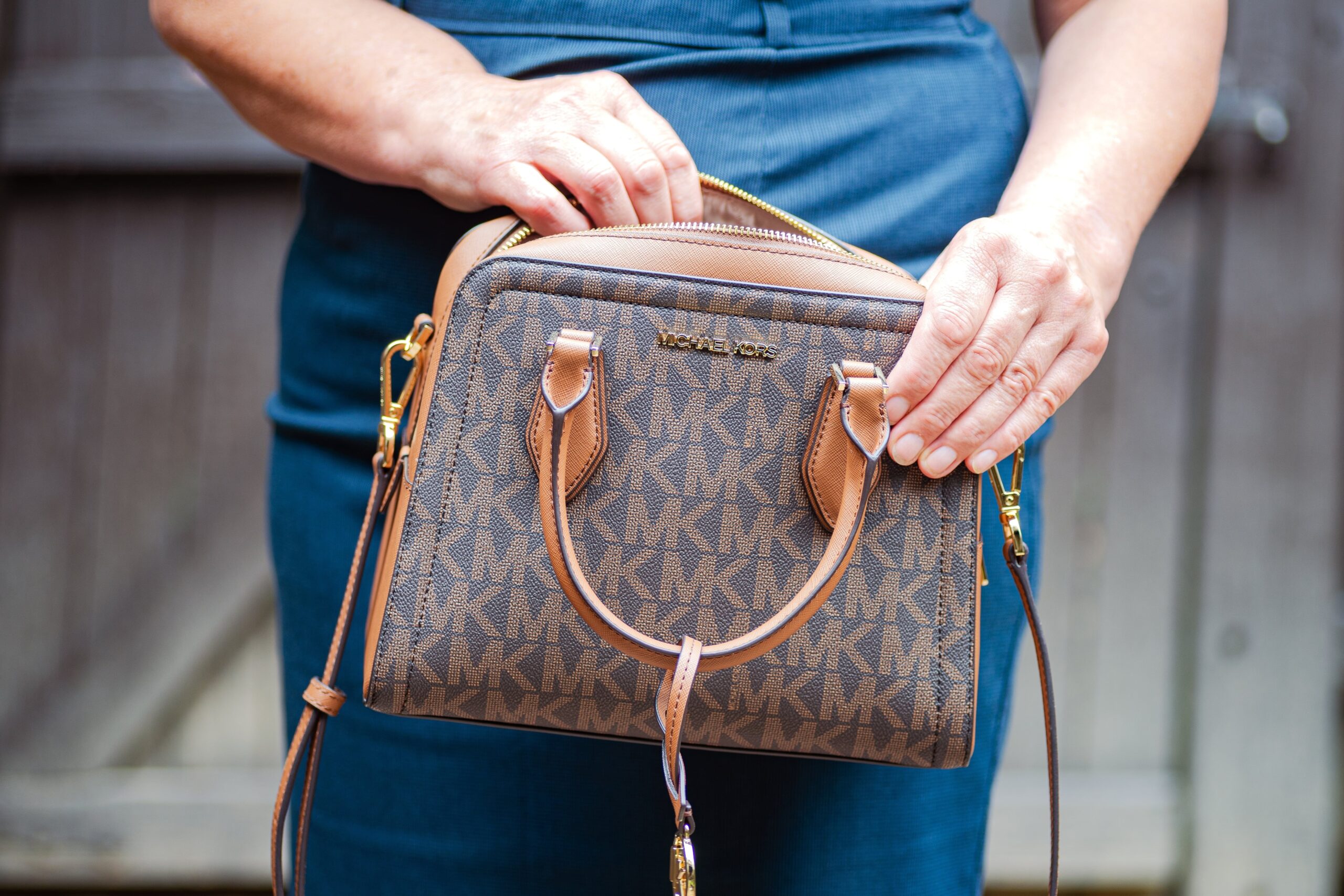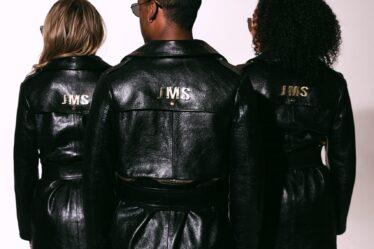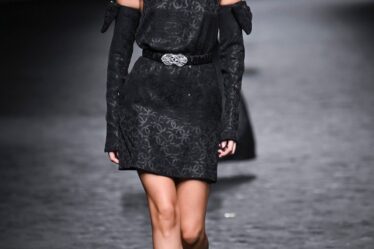
Capri Holdings CEO John D. Idol has a plan to turn around Michael Kors: Sell bags that shoppers want, at prices they’re willing to pay.
“Our issue is we have pricing that is out of line for what the customer’s expectation is,” Idol told analysts and investors in a conference call last week after its $8.5 billion sale to rival Tapestry was terminated. “They’re being much more choiceful today than they were two years ago.”
This means bringing back more affordable monogrammed satchels and fewer trendier, pricier pieces targeting the TikTok cohort. A smarter approach to wholesale is also on the agenda, while pricing and assortment will also be reevaluated at Capri’s other brands, Jimmy Choo and Versace.
It’s straightforward as far as brand turnarounds go. But investors are sceptical Capri can pull it off, at least on its own. The company’s shares lost more than half their value in late October, when a federal judge struck down its sale to Tapestry in an $8.5 billion deal that would have united Michael Kors with rival Coach. Last week, the companies walked away from the deal rather than appeal the ruling.
A merger would have provided Capri’s brands with much-needed scale; some described the deal as creating an American counterpart to European luxury groups LVMH and Kering. But what really excited the market was the idea of putting the executives behind Coach’s successful turnaround in charge of the long-suffering Michael Kors.
Coach, after all, was in a similar position 10 years ago as it grappled with over-distribution and eroding brand perception. Today, it’s releasing hit bag after hit bag, including with Gen-Z shoppers. Coach sales totalled $5.1 billion in its fiscal year ending Jun. 29, up 19 percent since 2019, with an operating margin of 32 percent. Meanwhile, Michael Kors posted $3.5 billion in its most recent fiscal year — down $1 billion, or 22 percent, from its revenue in 2019 — with an operating margin of 18 percent.
Under Tapestry, Michael Kors would have likely inherited the identical playbook, though there were plenty who doubted the same magic would work twice. Still, the less-flashy approach outlined by Idol last week has potential too, analysts say.
“The brand still has a lot of recognition, and the business generates cash flow,” said TD Cowen’s Oliver Chen. “They can do this, whether or not it’s at the speed they’d want and how much pain it will require.”
While Jimmy Choo and Versace are well-known global brands, Capri’s fortunes begin and end with Michael Kors, which made up 70 percent of the group’s net sales in its most recent fiscal year.
Sales have been declining for years as Capri eliminated major wholesale accounts as part of its plan to elevate the brand and direct sales to its own online and retail stores. But neither channel has been able to retain customers, and despite its attempt to woo a younger, more fashion-forward customer, new collections never quite landed the way Coach has scored with its Brooklyn or Empire bags.
The emphasis on trendier products — at higher prices — also alienated many existing customers. Its sales decline accelerated after the Tapestry deal was announced in August 2023. Assuming Capri’s brands would soon be under new management, Capri held back from any radical efforts to halt the slide in sales, Idol said on the conference call.
“Due to the merger, we did not place as much of an emphasis on our long-term planning,” he said.
With the deal off the table, those plans are back on. First, the Michael Kors will increase its marketing budget starting spring 2025, which will roll out in conjunction with the return of signature products. It will also likely reduce the prices of certain items, according to analysts.
“They need to re-assort to what their core customer was looking for, which was reasonable price points, or about a range between $149 to $295,” said Chen. Currently, shoulder bags cost around $250 to $400.
Michael Kors will close 75 stores in the next two years, Idol said, bringing its footprint down to 650 locations, which include outlets. At the same time, about 150 existing locations will be renovated.
These store improvements will be critical to the success of Michael Kors, according to analyst Dana Telsey.
“Retailers need to remodel, rejuvenate, remerchandise on a regular basis in order to maintain their ability to have compelling products and drive conversion,” she said.
Versace is a smaller business than Michael Kors, but its decline has been even swifter; in its most recent quarter, Capri said sales at the Italian luxury brand plunged 28 percent from a year ago.
The plan here, too, is to broaden its product assortment, improve store productivity and revamp the wholesale strategy.
“We believe we removed too many unique Versace statement items which resulted in a less exciting brand and product identity,” said Idol. “The aspirational luxury consumer presents a large opportunity to drive revenue for the brand. Therefore, we will be introducing a wider range of product pricing in our accessories, footwear and ready to wear businesses.”
In addition to striving for a more balanced offering, Versace will continue its investment in marketing, which resulted in recent campaigns with Anne Hathaway and Cillian Murphy, and in wholesale.
“We view the wholesale channel as a future growth opportunity for Versace as the brand is under-penetrated relative to our peers,” Idol said.
Jimmy Choo’s main priority will be boosting its casual footwear assortment to make up for declining occasionwear sales, expanding the category to be 30 percent of overall sales.
Department stores play an outsize role in Capri’s upcoming turnaround. All three brands look to improve their wholesale distribution, which Capri has cut back in recent years in a bid to prioritise its direct business.
While wholesale generates lower margins on product sales, it requires fewer expenses than e-commerce and retail, said Capri chief financial officer Tom Edwards in the call Thursday. And while wholesale channels have seen a larger sales decline than the overall business, Capri anticipates that the sector will stabilise in the wake of digital consolidation — Mytheresa’s acquisition of YNAP, for instance — and normalising travel retail sales.
But rather than increasing wholesale volume, Capri’s plan is to approach wholesale with a more calculated approach, matching wholesale products to the demand of that particular customer. It will also allocate more marketing dollars toward wholesale rather than just its direct channels.
As part of Michael Kors’ pullback from wholesale, for example, there were fewer “value-oriented” products offered to retail partners, which formerly made up a “very significant volume for the company,” Idol said. “I’m talking about $295 to $395 bags [that] we were pushing for $395, $495 and higher. And the customer just said no.”
Offering more affordable prices doesn’t mean Capri is turning its back on all the efforts it has made in recent years to elevate its brands. “We’re still not walking away from this perception that we’re going to build a more luxury store, a more luxury experience for the consumer, but there’s going to be more brand value there,” Idol added.
It’s a fine line, and Capri has a long way to go. But brands in far worse positions have been able to reverse their fates without a change in ownership. Just look at Abercrombie & Fitch, said Chen.
“When a brand doesn’t have too much heat, is it over forever? Everybody loves a comeback,” he added.



